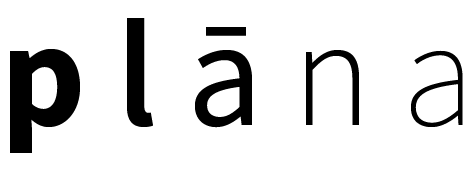When I started out in architecture and design, I didn’t realize how crucial writing and communication would be to my career. Like many others, I thought that if I honed my technical skills and created impressive designs, I’d be set. But over the years, I’ve come to understand that while designs do speak for themselves, they reach their full potential when paired with clear, impactful communication. Writing, speaking, and storytelling have become as essential to my journey just as the drawings themselves, bringing meaning and clarity to my work.
I also wanted to mention that my path to thought leadership and developing courses happened almost by accident. LinkedIn invited me to share my story for their “In It Together” campaign, showcasing my experiences in the industry. I found myself in the spotlight in a way I hadn’t anticipated and when they asked me to develop a course as an expert, I was like 'Who? Me?' But that experience taught me a valuable lesson: each of us has a unique perspective that others can learn from, and sharing it can open unexpected doors. Following that campaign, and developing several courses for LinkedIn Learning I began writing a newsletter, Design Diaries. What began as an experiment quickly grew into a tool for connecting with thousands of people interested in design, creativity, and professional growth.
This experience also helped me realize that writing itself has a meditative quality for me. Whether it’s drafting a newsletter, writing scripts for a course or posting an article, the process helps me refine my thoughts and clarify my perspective. I’ve always had a deep appreciation for words. Writing gives me the time and space to explore concepts and express them in a way that feels both meaningful and true. In many ways, writing these articles and reflections has become a form of journaling—something that lets me dig deeper into ideas I care about while sharing those insights with others.
Writing also brings a sense of precision to my thinking. I’m particularly inspired by the psychologist Jordan Peterson and his discussions about the power of precise language. Peterson argues that clarity in words reflects clarity in thoughts. This idea resonates with me, especially as I’ve seen how impactful it can be to express ideas in clear, direct language. It’s not just about using the “right” words but about finding language that captures the essence of what you want to convey. Precision in language, like precision in design, creates work that is both beautiful and authentic at the same time.
Over time, I’ve come to see writing as a way to strengthen connections in all aspects of my work. Whether I’m crafting a project proposal, composing an email for a client or my team, or sending a handwritten thank-you note, writing allows me to reinforce relationships. In fact, I keep Plana Architects branded stationery on hand for thank-you notes and try to send them out regularly for all kinds of reasons - having an opportunity to interview for a new project, a referral, heck I even send them to my neighbors for keeping an eye on my dog that likes to occasionally explore the neighborhood on his own! Everyone at Plana thanks you! LOL! But jokes aside, people respond positively to the personal touch of a handwritten note, and it’s become a sort of gratitude practice for me that has an added bonus of building and strengthening relationships and connections in a genuine and real way.
Documentation has also been key to my growth as an architect and designer, especially when working with teams and clients on complex projects. Early in my career, I made it a habit to document challenges and solutions for each project in these little 'lessons learned' reflections. I’d share these insights with my team to reflect on what worked, what didn’t, and what we could learn for the future. This practice not only helped us improve but also fostered a sense of camaraderie and partnership in the process. It was a reminder that even the challenges offered opportunities to grow and that our work could always evolve and improve.
As I’ve learned, good communication is as essential to design as the drawings themselves. Writing allows me to clarify my vision, and sharing those reflections with others builds trust. Through thoughtful communication, I’ve found that I’m not just designing spaces but also creating connections that last well beyond each project.
Writing has transformed how I work and how I relate to others in the industry. For designers, communication isn’t just a skill—it’s a cornerstone. It shapes how others see our work, deepens connections, and ultimately helps us leave a lasting impact in the field. In a sense, writing isn’t just part of my work; it’s part of the design process itself.

